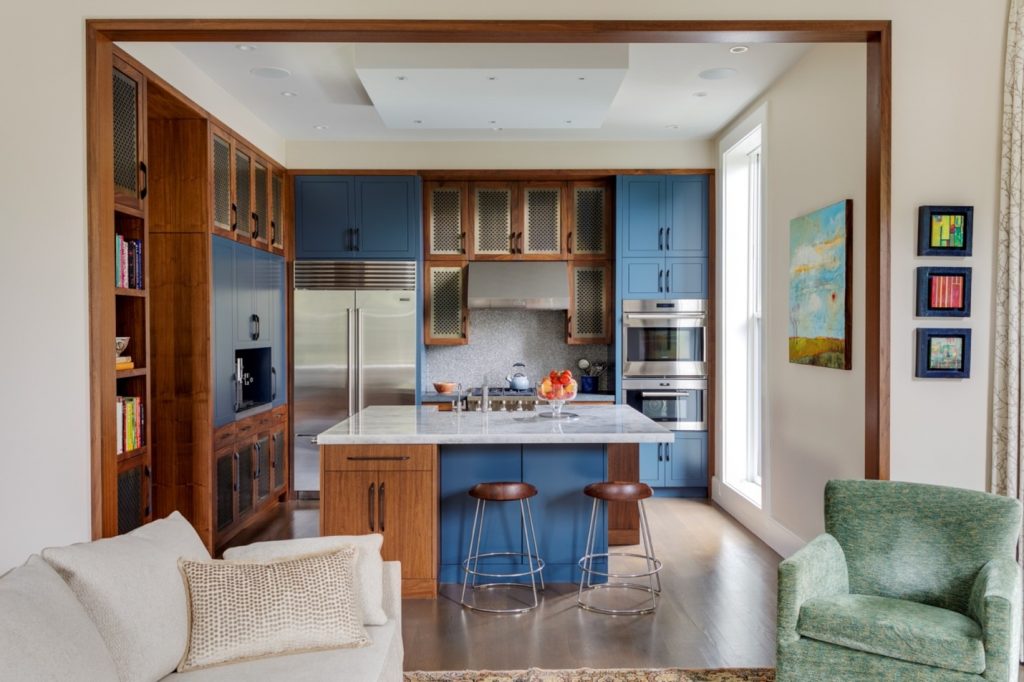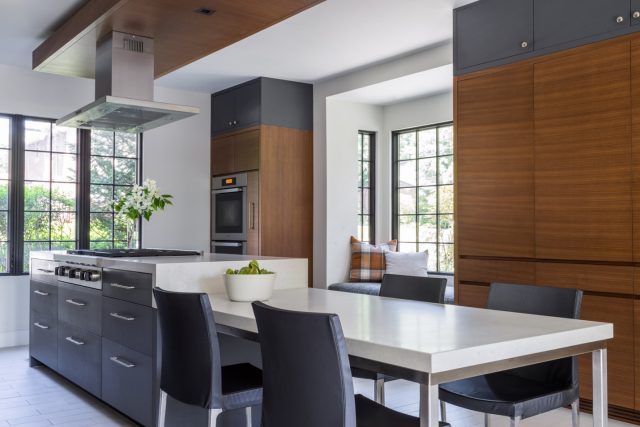Sleeping Dog Properties is a custom home builder working with clients in the New England area. In the following article, Sleeping Dog Properties discusses how the kitchen, once a mere cooking space, has evolved into the heart of a home—a central hub where families unite and entertain guests.
When it comes to designing a kitchen, there are two main priorities that homeowners consider: functionality and style. As such, it is important that the design of a kitchen not only looks good but also works well for the needs of the homeowner. Below, Sleeping Dog Properties unveil innovative design ideas for bespoke kitchens that seamlessly blend functionality and style.
Sleeping Dog Properties Understands the Needs of the Homeowner
The first step in designing a custom kitchen is understanding the needs of the homeowner. Every family has different lifestyles, cooking habits, and storage needs. Some may prioritize having ample counter space for meal prep while others may need more storage for their extensive collection of kitchen gadgets. Sleeping Dog Properties says that it is important to have a detailed conversation with the homeowner to understand their specific needs and preferences.
Consider the Kitchen Triangle
The kitchen triangle refers to the placement of three main work areas in a kitchen – the sink, stove, and refrigerator. Sleeping Dog Properties explains that these three areas are used most frequently in a kitchen and should be placed in a way that allows for efficient movement between them.
When designing a custom kitchen, it is important to consider the kitchen triangle and ensure that the three areas are not too far apart from each other. This will save time and energy when cooking in the kitchen.
Choosing the Right Layout
There are several different layouts to choose from when designing a custom kitchen. The most common ones include the U-shaped, L-shaped, and galley layouts. The key is to choose a layout that not only fits the space but also works well for the needs of the homeowner. For example, if the kitchen will be used for multiple cooks at once, an open-concept layout may be more suitable.
Maximizing Storage Space
Sleeping Dog Properties reports that one of the biggest challenges in any kitchen design is maximizing storage space. Custom kitchens allow for more flexibility in this aspect as cabinets and shelves can be designed to fit specific needs. For example, pull-out shelves are great for storing pots and pans while vertical dividers can help organize baking sheets and cutting boards. It is important to assess the homeowner’s storage needs before designing the cabinets and shelves.
Focus on Quality Materials
When it comes to designing a custom kitchen, it is important to invest in quality materials. This not only ensures durability but also adds to the overall aesthetic of the kitchen. Sleeping Dog Properties explains that high-quality materials such as solid wood cabinets, quartz countertops, and stainless-steel appliances can elevate the look and feel of any kitchen. It is important to choose materials that are not only visually appealing but also functional for everyday use.
Incorporate Smart Technology
In today’s world, technology plays a big role in our daily lives and this includes the kitchen. Sleeping Dog Properties notes that when designing a custom kitchen, consider incorporating smart technology such as touchless faucets, built-in charging stations, and voice-activated appliances. Not only do these features add convenience to the homeowner’s life but they also add a modern touch to the kitchen design.

Lighting is Key
Lighting is often an overlooked aspect of kitchen design, but it can make a big difference in both functionality and style. A well-lit kitchen not only makes cooking tasks easier but also adds to the overall ambiance of the space. Sleeping Dog Properties Consider incorporating different layers of lighting such as overhead lights, under-cabinet lights, and pendant lights to create a well-lit and inviting space.
Don’t Forget the Finishing Touches
Sleeping Dog Properties remarks that the finishing touches are what tie the whole design of a custom kitchen together. These can include cabinet hardware, backsplash tiles, and window treatments. It is important to choose these finishing touches carefully as they can make or break the overall look of the kitchen. Consider incorporating elements that complement the overall design and add a personal touch.
Conclusion
Designing a custom kitchen that combines functionality and style requires careful consideration of the homeowner’s needs, proper layout planning, and attention to detail. By following these tips and taking the time to understand the specific needs of the homeowner, you can create a kitchen that not only looks beautiful but also functions well for everyday use. Sleeping Dog Properties reminds readers that a kitchen should not only be aesthetically pleasing but also serve as a functional space for the whole family to enjoy. So, take the time and effort to design a custom kitchen that meets both these needs and watch it become the heart of your home.









